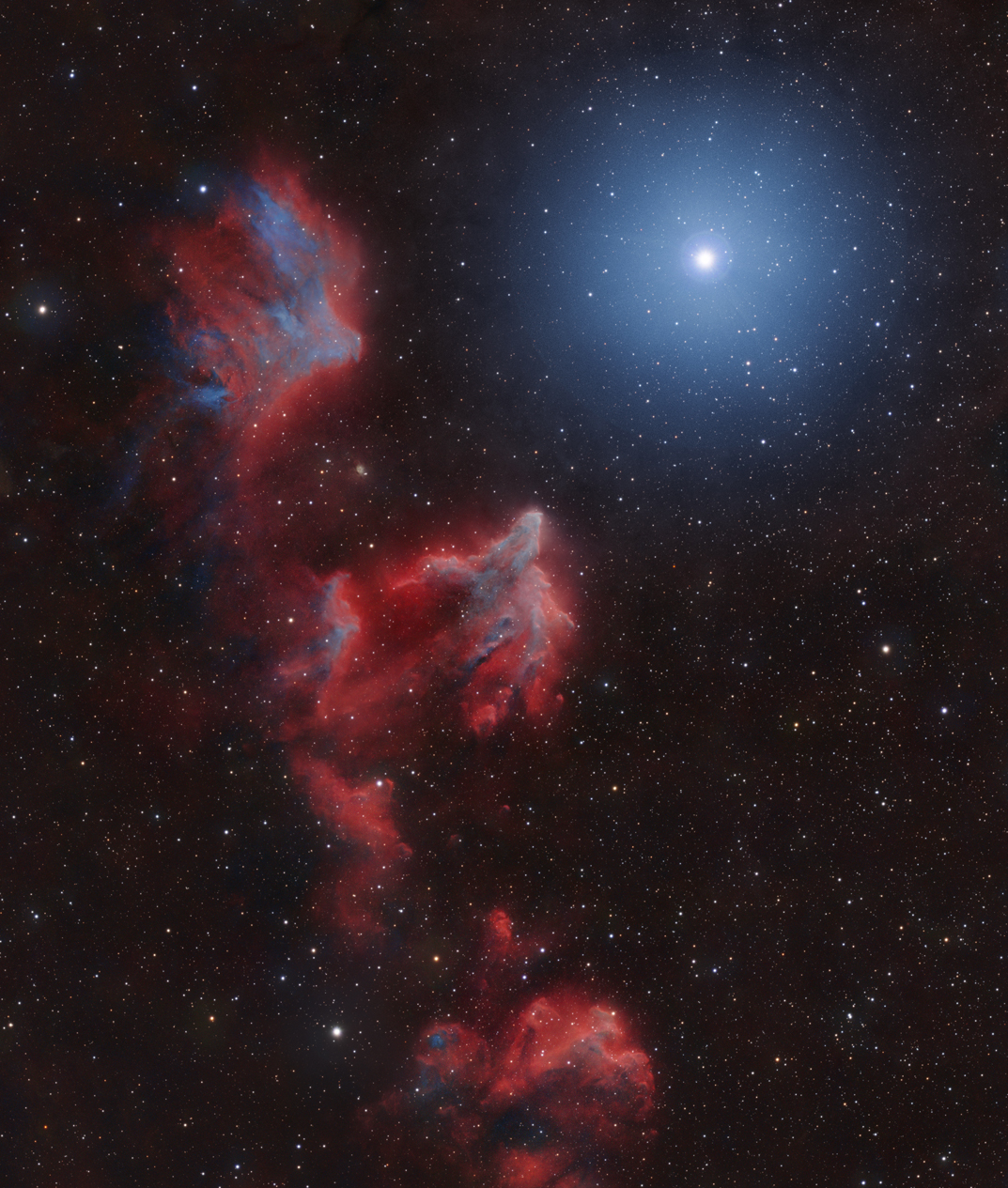Ghost
of Cassiopeia (IC63)
Characteristics:
RA (J2000): 00h 58m 44s
Dec (J2000): +60 degrees 55' 30"
Description:
IC59 and IC63
are mixed reflection and emission nebulae stimulated by
radiation from the massive B-class star Gamma Cassiopeia (aka Gamma
Cass). IC63 is in the center of this field of view and is also
known as the "Ghost of Cassiopeia" due to its suggestive, haunting
shape (please see the labeled
image for identification). Reflection nebulae
are illuminated because
dust grains within them scatter starlight via Rayleigh
scattering. In this
process, incident light creates electric dipoles in the dust particles,
which
then oscillate and re-radiate the light at the same wavelength (but in
various
directions). Shorter wavelengths induce Rayleigh scattering more
efficiently, giving the nebula its characteristic bluish tint.
Emission
nebulae, in contrast, emit light
when electrons in atoms such as hydrogen are excited by energetic UV
photons
(for instance) from a nearby star (such as Gamma Cass). The
excited electrons
then release photons as they return to lower energy states, with the
emitted
photons (such as the 656nm photons characteristic of Ha) having an energy equal to the difference between the
two energy levels (n=3 down to n=2, for the Balmer series). In the case of IC63, which lies closer to
Gamma Cass than IC59, the emission component is stronger and partially
dominates, giving IC63 a reddish hue or a blend of red and blue.
For IC59,
which lies further from Gamma Cass, the reflection component is more
prominent
because Hα emission is weaker, resulting in a nebula that appears
predominantly
bluish. Gamma Cass is a fascinating
star: a B-type star with prominent emission lines in its spectrum, as
opposed
to the more typical absorption lines seen in stellar spectra.
Classified as a
Be star (the "e" signifying emission), it rotates extremely rapidly,
ejecting matter into a surrounding circumstellar disk. Components such
as hydrogen
and helium within this disk are then excited and emit characteristic
spectral
lines, which can be observed in spectral analysis.
Photographic
Details:
Dates: Three nights in 2025: September 18, 19, and 20.
Scope: Takahashi
FSQ106 at f5 on the Skywatcher EQ6-R mount.
Autoguider: ASI178 autoguider with SvBony 30mm guidescope, focal length
120mm.
Camera: ZWO ASI294MM at -10C,
with
7 position ZWO filter wheel. Pixel size is 2.3 microns (Bin 1x1),
yielding an image scale with the FSQ (530mm focal length) of 0.90
"/pixel (well matched for my seeing of 3 arcseconds).
Camera gain set to 50 (e-gain
2.13 electrons/ADU), offset 25.
Read noise at this gain level was 2.18 electrons rms.
Filters: Baader Red,
Green, Blue, and Ha filters.
Image acquisition
software: MaximDL for camera control and autoguiding; CCD
Commander for automation.
Exposures: Total
exposure 14 hours Ha: 3 hours, 300 second subs; Red: 4 hours, 120
second subs; Green: 3 hours, 120 second subs; Blue: 4 hours, 120 second
subs.
Processing:
Calibration,
integration, deconvolution (BlurXTerminator), noise reduction
(NoiseXTerminator) in
Pixinsight; subsequent processing in Photoshop.
Please
note: Graphics on this website may not be reproduced without
author permission.
Back to Nebulae
Home

